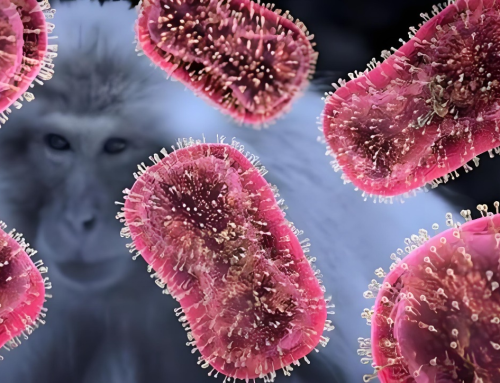Liver, the “human body chemical plant”, plays many key roles in the body. It is not only the largest organ in the human viscera, but also the largest nutrition center and the largest garbage toxin disposal site. It participates in the important metabolism and detoxification of the body, is the life sustainer of the human body, and is also the cornerstone of human health.

At the same time, the liver is the most “tolerant” organ in our body. Because of its lack of pain nerve, it often suffers silently in the early stage of injury, and it is not easy to give an alarm. Until the lesion is more serious, the pain in the liver area may become an obvious warning, which usually marks that the disease has entered a more serious situation. Liver diseases such as hepatitis, and hepatitis C is one of the typical representatives of hepatitis.
Hepatitis C is an inflammatory liver disease caused by hepatitis C virus (Hepatitis C virus, HCV) infection, which can lead to chronic inflammation, necrosis and fibrosis of the liver, and some patients can develop into cirrhosis or even hepatocellular carcinoma (HCC), belonging to Class B infectious diseases. According to the statistics of the World Health Organization, the global infection rate of HCV is about 3%. It is estimated that about 180 million people are infected with HCV, and there are about 35,000 new cases of hepatitis C every year. There is a large number of HCV infected people in China, and the positive rate of HCV antibody is 0.43%. Together with high-risk groups (such as blood transfusion, plasma collection, intravenous drug users, immune system impaired, etc.), there are about 10 million infected people. Chronic hepatitis C is an important cause of cirrhosis and hepatocellular carcinoma.

Source:Public | @NobelPrize
Discovery of Hepatitis C Virus
At the end of the 20th century, several cases of post-transfusion hepatitis with “non-A, non-B hepatitis” (NANBH) attracted attention, suggesting the presence of an unknown virus. In the 1980s, a study of cases of “non-a, non-B hepatitis” revealed the presence of a new virus, but the identification of the virus was unsuccessful for nearly a decade. In 1989, a team led by Michael Houghton, an American scientist, used molecular biology techniques to isolate viral sequences from the plasma of a chronic hepatitis patient and confirmed hepatitis C virus (HCV). Subsequently, HCV was identified as a single-stranded RNA virus, belonging to the Flaviviridae family, with a complex genome, multiple genotypes, and liver targeting. After the 2000s, until the emergence of antiviral drugs, especially DAA (such as sofosbuvir), the treatment pattern was changed and the cure rate was improved.

Hepatitis C virus (HCV), belonging to the family Flaviviridae, is a single-stranded positive-strand RNA virus with a genome of 9. 6 kb, which encodes a polyprotein precursor of about 3010 amino acids, and forms functional structural and non-structural proteins after splicing.
Non-structural Proteins (NS proteins) of HCV include NS2, NS3, NS4A, NS4B, NS5A and NS5B. Although non-structural proteins do not form part of the viral particle structure, the human immune system also produces antibody responses to these proteins because they are active in the viral life cycle. In the late stage of HCV infection, especially in chronic infection, the antibody rate of non-structural proteins is high, so the detection of antibodies to NS3, NS4 and NS5 is of great value for the diagnosis of chronic infection and the evaluation of disease progression.
Source:360doc.com
The core protein of HCV constitutes the nucleocapsid of the virus and wraps the genome of the virus. It is one of the earliest proteins synthesized in the life cycle of the virus. The amino acid sequence of HCV core protein is very conservative, and the human body will quickly produce immune response to HCV after infection and produce corresponding antibodies. Therefore, the core antigen is often used as a target in the detection of HCV antibodies, especially in the primary screening test, and the detection of antibodies against HCV core protein in serum can help to determine whether an individual has been or is infected with HCV.
In order to improve the sensitivity and specificity of the assay and to ensure that antibodies are detected both at the beginning of the infection and at a later stage when more antibody lineages are detected, antigenic fragments using a combination of core and non-structural proteins were designed. In addition, the detection of antibodies against non-structural proteins can also be used to distinguish HCV infections of different genotypes, because the non-structural proteins of different genotypes are different in some regions, which may lead to differences in antibody responses.
Product Data
Reagent: Bio-Mapper HCV antigen (CMIA)
Precision: The precision of clinical samples containing positive and negative points was tested, and the coefficient of variation (CV) of luminescence value (RLU) was less than 10%, and the precision of Bio-Mapper -HCV reagent is truely good.

Specificity: 1256 random clinical samples were tested, and 5 positive cases and 1251 negative cases were detected. 5 positive cases were rechecked with Roche reagent (electrochemiluminescence method), and the results of Roche test were consistent with those of Bio-Mapper test. Bio-Mapper -HCV has low false positive rate and good specificity.

National standard: Bio-Mapper -HCV conforms to the national standard.

Product recommendation
HCV Antigen & Antibody:
HCV Uncut Sheet recommendation









